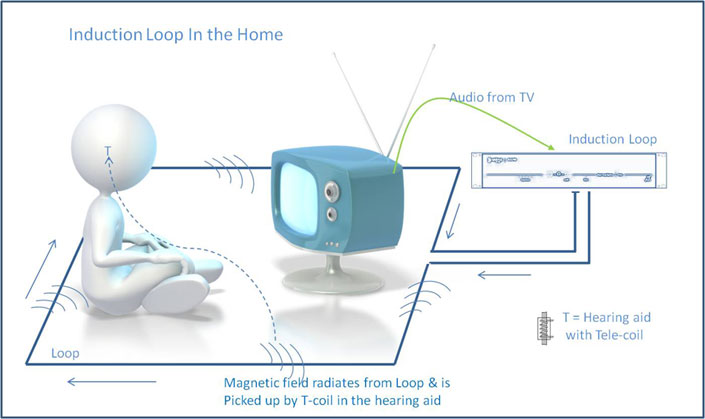How Does An Induction Loop Work?

In this example, the hard of hearing person is using an induction loop system to listen to the TV.
The system comprises an induction loop amplifier connected to a loop of cable placed around the perimeter of the room.
The audio output of the TV is connected to the input of the amplifier which in turn drives a current around the loop. The current is modulated by the audio input and therefore carries the audio signal. As the current flows round the loop, it sets up a magnetic field. This magnetic field which now contains the audio, induces a current into the pick up coil, T-coil of the hearing aid. The induced current is processed by the hearing aid, tonally corrected for the persons individual hearing loss, amplified and fed directly into the ear through the hearing aid apeaker.
' It is like putting your ear up against the speaker.'
All induction loop systems work in the same way. The loop configuration may be more complex, figure -8, Super 8TM SuperLoopTM etc and the input signal feed maybe from a microphone, audio mixing desk, PA or other source, but the principles are still the same. An electric current carrying the audio signal flows through a cable setting up a magnetic field which induces another current to flow in the T-coil of the hearing aid. This current is processed by the hearing aid and fed into the ear through a speaker.
NOTE
Just because an induction Loop system complies to the performance standard IEC60118-4:2006, it does not necessarily mean than it provides any benefit to the users. The audio input must be good quality, and as far as possible, free from background noise. For live speech and music, the easiest way to achieve this is to use radio microphones, which can be worn by the speaker.



